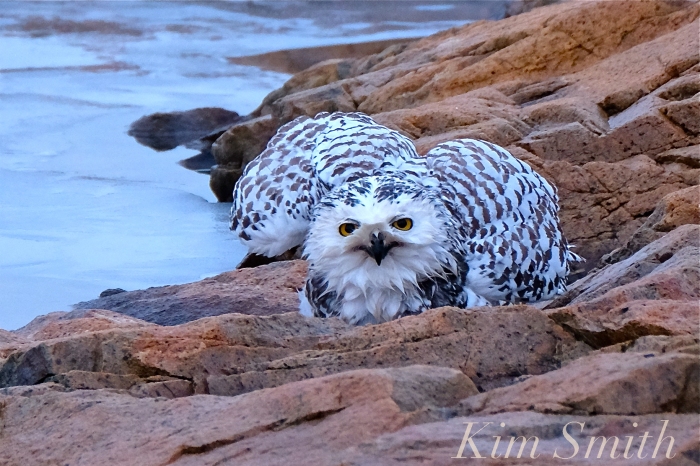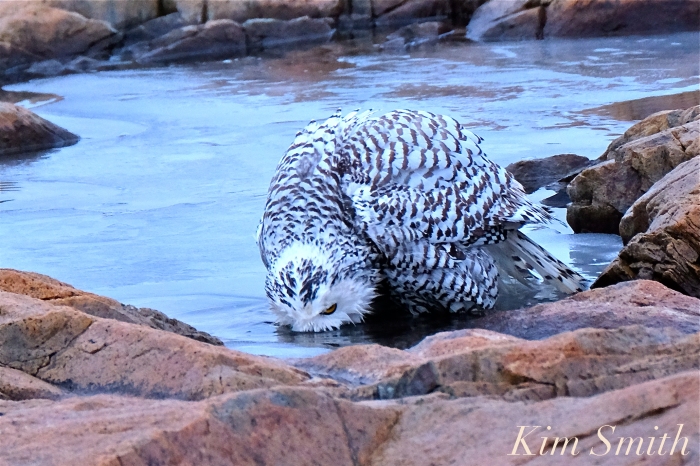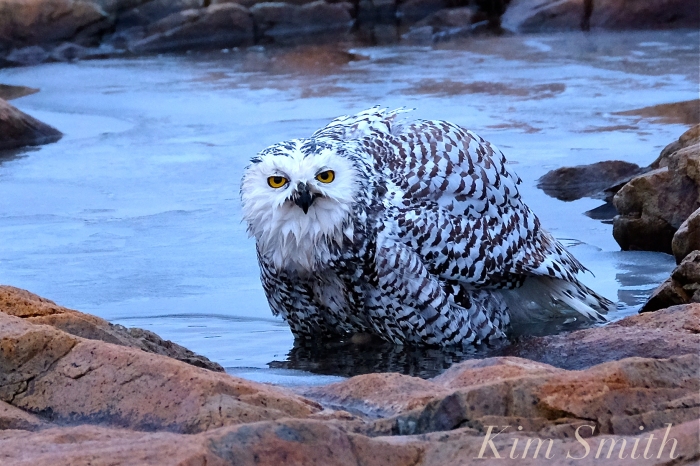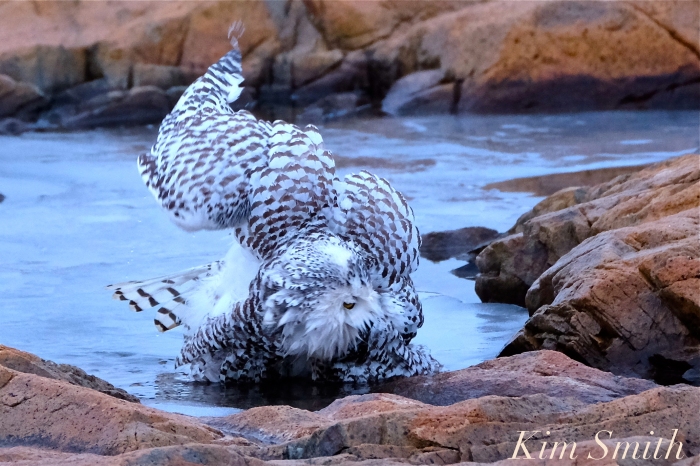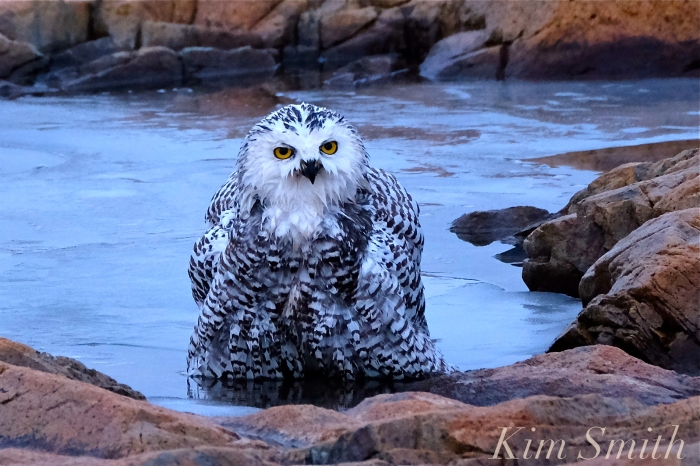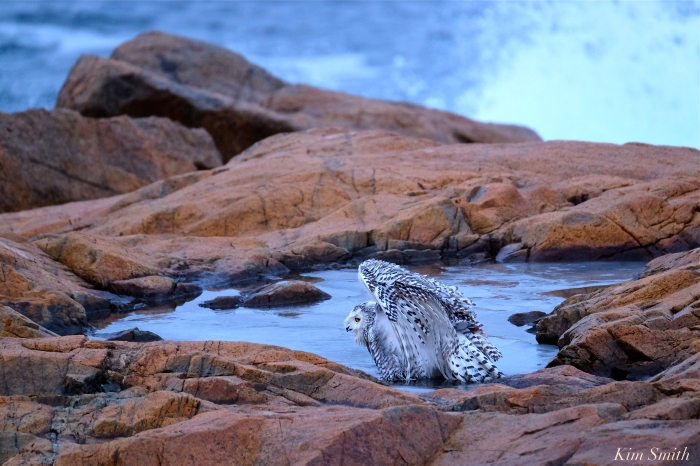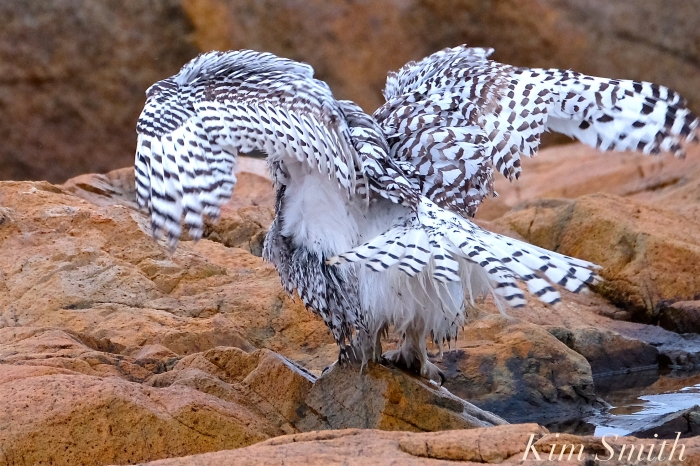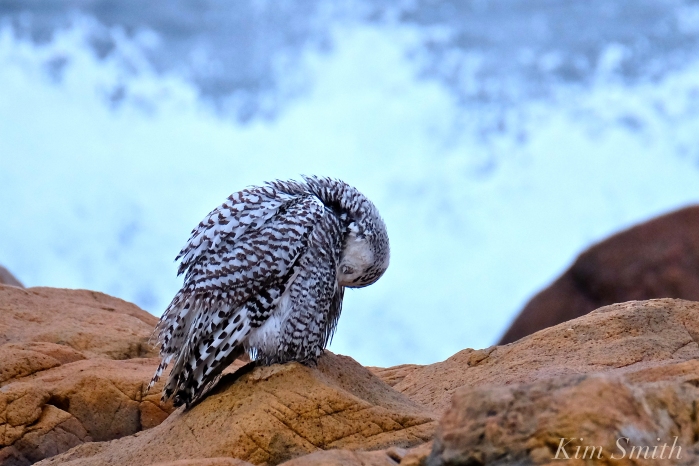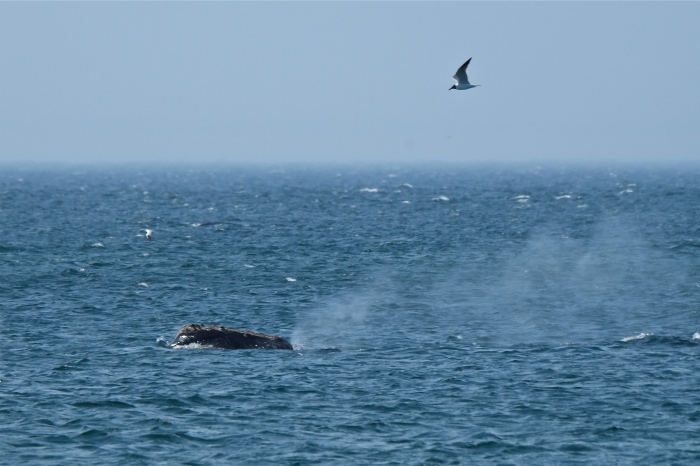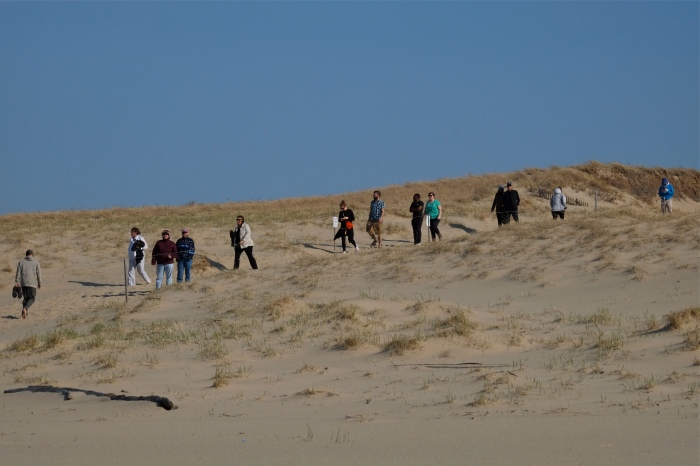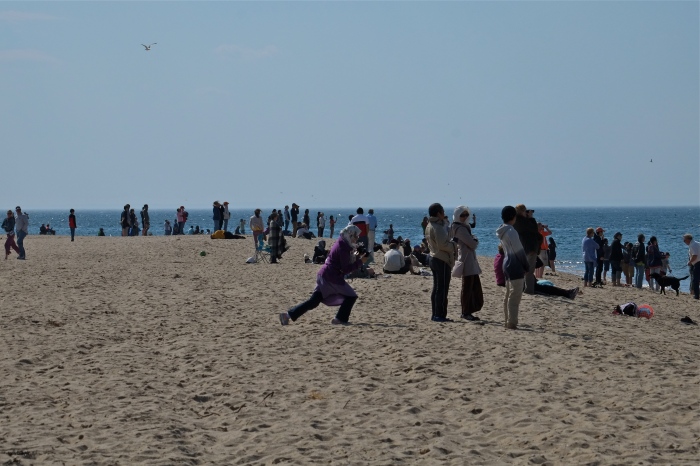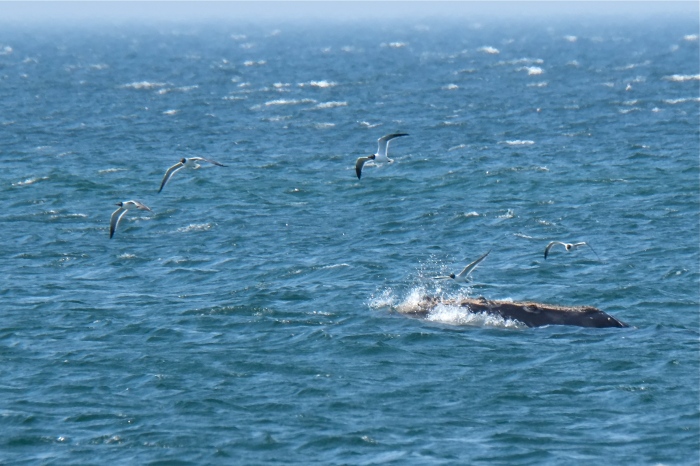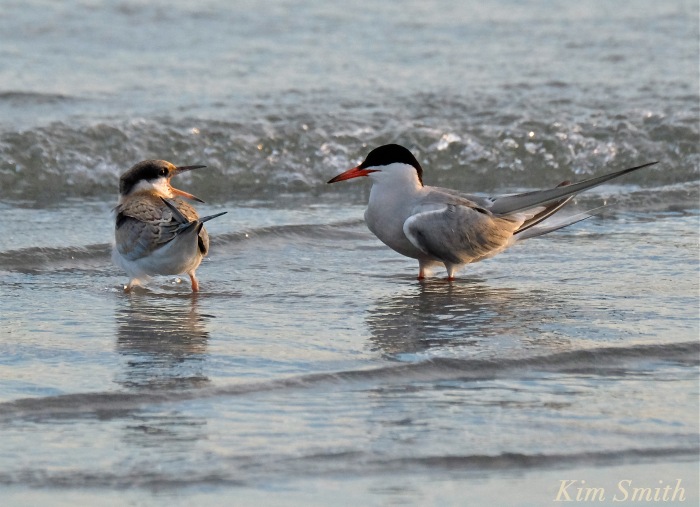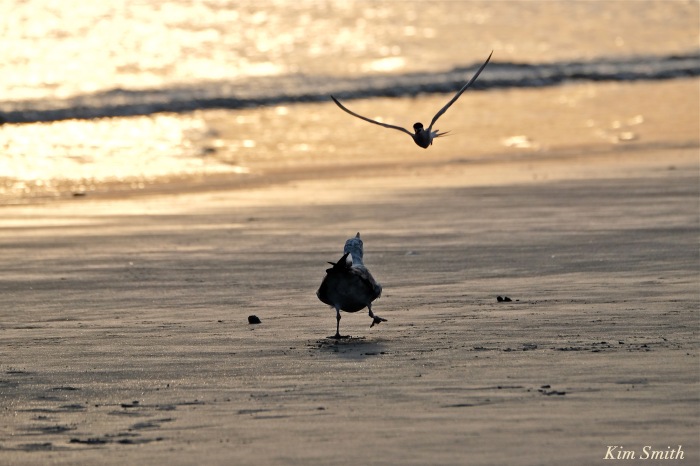Filming and photographing Cape Ann wildlife I have experienced extraordinary beauty and fascinating behaviors at nearly every encounter but filming a Snowy Owl take a bath has to be one of my favorite captures. I think there are a number of reasons why we are so captivated by these beautiful creatures. Most owls are nocturnal, which doesn’t allow much viewing of their day to day life. On the other hand, the diurnal Snowy Owl gives us a wonderful window into their world. Culturally, owls symbolize wisdom and intelligence and the characters they are assigned in literature strengthen our associations. Mostly though we are drawn to these creatures because they do not appear to be afraid of us, unlike most wild animals. Snowies will become irritated and depart an area when startled, or are being pestered, but I don’t sense fear in these Arctic visitors. I wonder if most have ever even seen a human being prior to migrating south.
 Hedwig was a contented mess, her feet and talons blood stained reddish pink from a fresh kill. It was the morning after a storm, and the crevices atop Bass Rocks held pools of icy fresh water.
Hedwig was a contented mess, her feet and talons blood stained reddish pink from a fresh kill. It was the morning after a storm, and the crevices atop Bass Rocks held pools of icy fresh water.
She gingerly at first hopped over to the largest pool, paused, and then jumped in. Repeatedly Hedwig dipped her face into the water to drink. After quenching her thirst, she plunged her entire face into the pool of water. She cleaned her face feathers by rubbing them against her breast feathers. Immersing, rubbing, immersing, rubbing, her face was clean in no time.
Then Hedwig went all in, dipping and soaking all her feathers, but not all at once did she completely submerge herself. I think that would have left her vulnerable to predators if she were unable to fly. She dipped and soaked, then fluffed her feathers, then repeated all several times more. The total length of time was about 40 minutes; she was still fluffing when I had to leave. Watching a Snowy Owl take a winter bath was beautiful and fascinating, unexpected and funny and am overjoyed to have captured with photos and film.
 Happiness is a long winter bath.
Happiness is a long winter bath.
A flock of Herring Gulls had the same idea.







